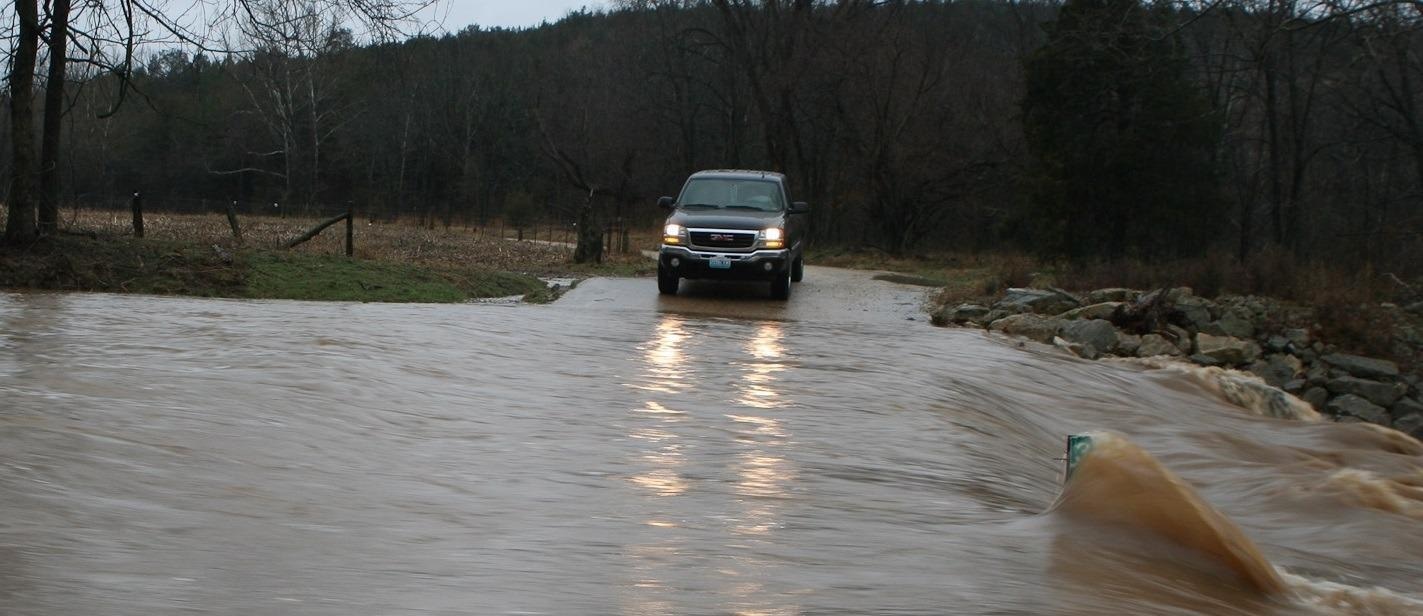Reviewed by Alex SmithApr 27 2022
The latest UN report on climate change recorded scientists’ efforts that have revealed some measures of global warming are now unavoidable, and recent research efforts are concentrating on adaptation and mitigation strategies.

Image Credit: Joe Lawton, NOAA NSSL
This has been explained as a universal problem by the National Aeronautics and Space Administration, felt on local scales. On a similar note, scientists of the National Oceanic and Atmospheric Administration are offering the data, tools and information to gain better insight and prepare for climate change.
One of the effects that have been affected by the warming climate is an alteration in the frequency of flash flooding events, and also the locations in which they happen.
Under the guidance of the University of Oklahoma, with the NOAA National Severe Storms Laboratory and collaborators at the National Center for Atmospheric Research, a research team has made simulations from linked climate and hydrologic models that illustrate extensive increases in the happenings of flash flooding events throughout the majority of the United States.
The study has been headed by Yang Hong, a professor of hydrology and remote sensing in the School of Civil Engineering and Environmental Sciences and the School of Meteorology at the University of Oklahoma (OU).
Hong is the director of the Hydrometeorology and Remote Sensing Laboratory and the founding director of the hydrology and water security online master’s program at OU.
The study findings are published in Nature: Communications Earth and Environment. Zhi Li, a doctoral student with the HyDROS Lab, is the first author.
This study builds upon the state-of-the-art model (EF5/CREST) that is jointly developed by researchers with OU, NASA, and NOAA’s National Severe Storms Laboratory and has initiated collaboration with National Center for Atmospheric Research climate scientists.
Zhi Li, Study First Author and Doctoral Student, University of Oklahoma
Li added, “It realizes the concept of ‘Digital Twin in Earth System Science,’ in which one is our living climate and the other one is our future. Climate change never became so real to me until we successfully collaborated on such research.”
“There hasn’t been a real definitive study on what's going to happen with flash floods in the future,” stated Jonathan J. Gourley, research hydrometeorologist with the NOAA National Severe Storms Laboratory and contributor to the study.
“We didn’t have that robust of an observational record. so, this study helped to fill in that gap. By using some of the rainfall simulations from a convection-resolving climate model and then coupling with our high-resolution hydrologic modeling system, we can see what sort of flash floods would be produced in the future,” added Jonathan J. Gourley.
The researchers utilized climate simulations and modeling of a three-decade period, from 2070 to 2100, to forecast the location and degree to which flash floods are likely to take place. The effect, what the scientists have termed “flashiness,” explains the probability of weather conditions that could result in quick rainfall and also in flash flooding.
The researchers discovered that, if emissions remained at their current rate, flooding events would be 7.9% “flashier” by the end of the century. This implies heavy rainfall events are likely to take place rapidly and in concentrated areas that could result in flooding.
At the same time, their results display over a 10% increase in flash flooding in the Southwest U.S., the biggest increase in “flashiness” amongst historical flash flood hot spots. The central U.S. is rising as a new flash flood hotspot as well, with an 8.6% anticipated increase. On the whole, their outcomes show that future flash flood-prone regions are shifting northwards.
More people will have to learn not just how to survive floods but also how to better live with ever-increasing flash floods. The 20-year return floods will more likely occur every two to five years, especially alarming for the emerging flashiness hotspots that will be facing unprecedented challenges with aging infrastructure and outdated flood risk measures.
Yang Hong, Professor, Hydrology and Remote Sensing, School of Civil Engineering and Environmental Sciences, University of Oklahoma
Hong added, “There is a pressing need to implement climate-resilient engineering infrastructure and develop smart hydrological early warning systems.”
Despite these findings, there is still time to restrain a few of the more extreme impacts. Gourley feels climate mitigation strategies could be a great help.
Now’s the time to start thinking about better flood defenses. Of course, decreasing greenhouse gas concentrations would be the ultimate solution, but in the meantime, we can think about ways to reduce vulnerabilities and improve flash flooding safety education.
Yang Hong, Professor, Hydrology and Remote Sensing, School of Civil Engineering and Environmental Sciences, University of Oklahoma
“The majority of fatalities related to flash floods are not floods finding people, but people finding floods, meaning they're out and about. They’re typically driving through a flooded roadway,” added Hong.
The best method to stay protected during flash flooding events is to stay away from the roads and evade standing water.
Journal Reference:
Li, Z., et al. (2022) The conterminous United States are projected to become more prone to flash floods in a high-end emissions scenario. Communications Earth & Environment. doi.org/10.1038/s43247-022-00409-6.